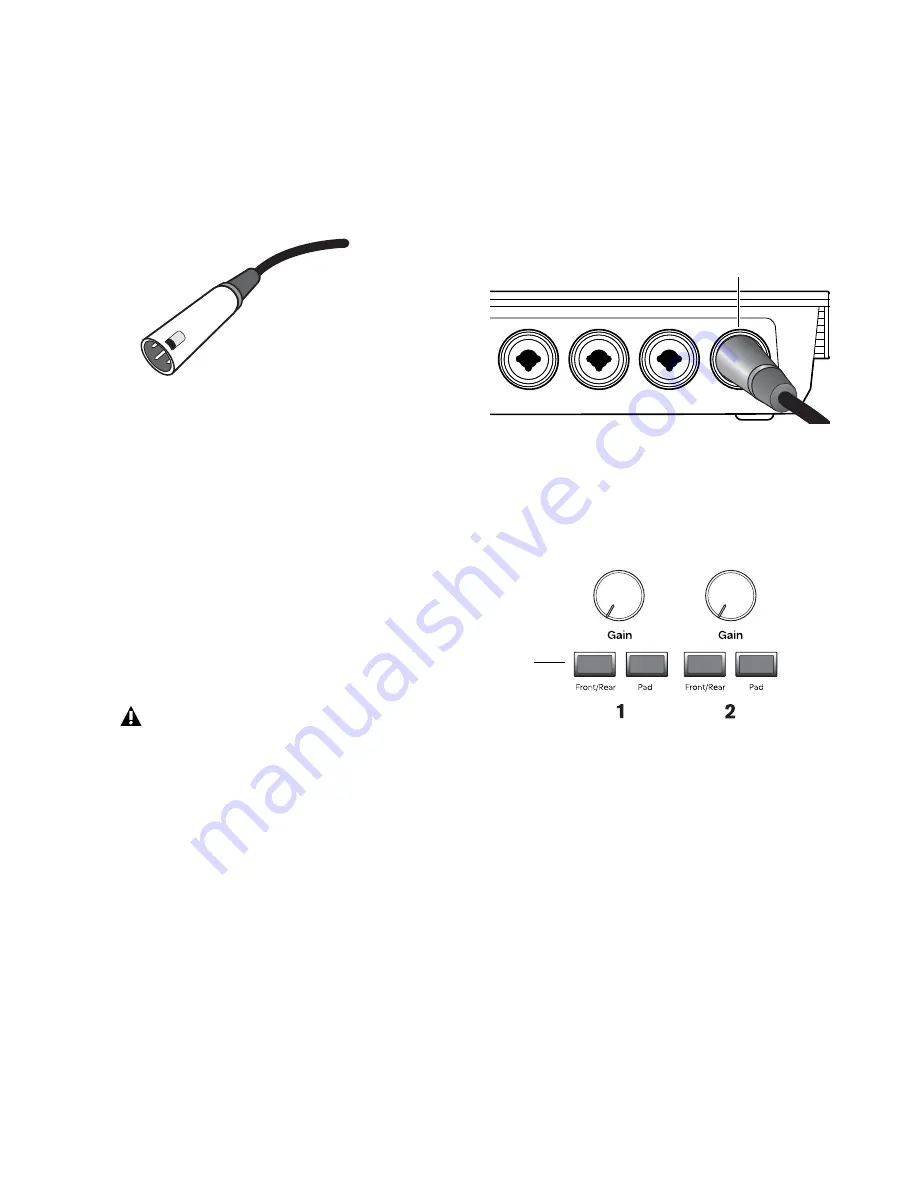
Chapter 4: Hardware Connections
13
switch is set). If you are not sure about the phan-
tom power requirements for your microphone,
refer to your microphone’s documentation or
contact the manufacturer.
Phantom Power
Some microphones require power to operate.
This power, called
phantom power
, is supplied ei-
ther by a battery in the microphone, or through
an audio interface (such as Fast Track C600) that
can send power through the microphone cable.
Most
condenser
microphones (such as an
M-Audio Solaris) require phantom power to op-
erate.
Dynamic
microphones (such as a Shure
SM57) do not require phantom power to oper-
ate, but are not harmed by it.
Using a Mic with an XLR Connector
To use a microphone that has an XLR connector:
1
Plug your microphone cable into one of the
XLR Mic inputs on the back of Fast Track C600.
2
If you are using Input 1 or 2, make sure the In-
put Selector switch (on the top panel) is set to
the “out” position. This ensures that the rear in-
put is selected.
3
If your microphone requires phantom power,
make sure the microphone is connected, then
press the Phantom Power switch (labeled
48V
)
on the front of the Fast Track C600 that corre-
sponds to the input pair (1-2 or 3-4) you are us-
ing. This switch sends 48V to
both
mic inputs.
The 48V LED on the front of the Fast Track C600
will light when phantom power is being sup-
plied.
XLR connector
Although phantom power can be used
safely with most microphones, it is possible
to damage some ribbon microphones if the
phantom power is left on. Always turn off
phantom power, and wait at least ten sec-
onds before connecting a ribbon micro-
phone.
XLR connector plugged into Input 1
Input 1 - Input selector
Input 1-4 (Mic or Line)
4
3
2
1
Input
1
Input
selector
Summary of Contents for Fast Track C600
Page 1: ...Fast Track C600 User Guide...
Page 49: ......






























